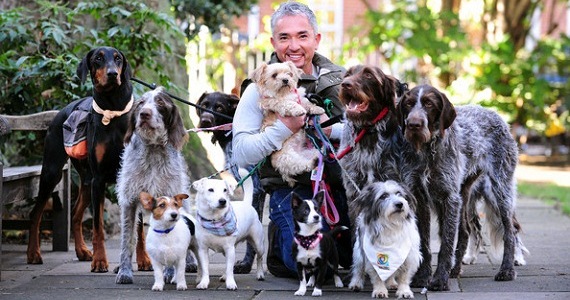There are several models that describe assertiveness and how to develop it, but amongst the best thinking comes from Ken and Kate Back, who’ve specialised in this area of human behaviour for over 20 years. In their book “Assertiveness at Work - a practical guide to handling awkward situations”, they describe what assertiveness is, and how to develop it. Their concepts are simple and make sense, and have helped many people to become more effective in their dealings with others.
DEFINING ASSERTIVENESS Assertiveness lies in the middle of a continuum of behaviour towards others, that the Backs defined in terms of how we recognise the rights of the two parties involved.
Aggressive: You exert your right to have ideas and opinions at the expense of the other person’s rights. In fact you behave as if the other person’s rights don’t matter.
Assertive: You exert your rights freely and clearly, but at the same recognise the other person’s rights to be heard, to have pride in what they do, etc.
Non-Assertive: You take too much account of the other person’s rights, to the extent that you forego some or all of your rights to express ideas or influence events.
To illustrate the three types of behaviour, they quote a simple example of a manager spotting some minor errors in the written work of a subordinate. The manager goes to the individual and says:
Aggressive “I don’t know how you’ve got the nerve to give me this sort of stuff for signing. It’s full of mistakes.” Assertive “Jane, I’d like you to re-do this document as there are several mistakes in it.” Non-Assertive “I know it’s, er …. probably my fault in …. not writing very clearly, but is there, um …. any chance at all you could find a spare minute to um …. just change one of two small things on this letter for me?”
Or you find an excuse not to take the document back at all…
Clearly the desired behaviour is to be assertive, and the book goes on to describe in detail how you can develop assertiveness in a range of situations. To frame that development, they put forward the idea of Inner Dialogues: those conversations we have with ourselves before we interact with someone else. Sometimes these Inner Dialogues are subconscious, but if you become more aware of them, you can manage them and become more effective in your dealings with others. To go back to the example above, the inner dialogues might be:
Aggressive “If people produce rubbish, I have every right to tell them so” “She obviously doesn’t care. That’s typical of young people today.” “This reflects badly on me, and I won’t stand for it.” Assertive “This may be uncomfortable for us both, but we can handle it.” “She has the right to make mistakes, but also the responsibility to correct them.” “I want her to know the effect her errors have on other people.” Non-Assertive “I don’t want to make a scene or upset our working relationship.” “I’m sure these are unintentional errors - I’ll let it go this time.” “I know she’s very busy, so I expect that’s why these mistakes happened.”
By having your Inner Dialogue before you deal with the other person, you can adjust your behaviour to be Assertive. You achieve this by turning your Faulty Inner Dialogue (aggressive or non-assertive) into a Sound Inner Dialogue (assertive). There’s something for all of us in this model - it isn’t just for tyrannical bosses or shrinking wall-flowers! Effective assertive behaviour is an important building block for creating a empowered, involving, learning organisation culture. You would do well to develop your assertiveness before embarking on grander culture changes. Many training organisations incorporate this thinking into their training courses on Assertiveness or Personal Effectiveness, but if you want to understand Assertiveness properly, Ken and Kate Back’s original book is a great place to start.
posted by Mark Butcher
